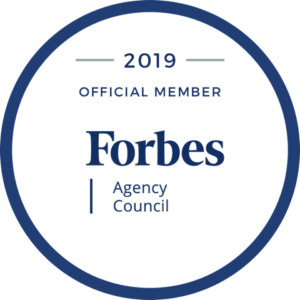Know your audience. You’ve heard this bit of presentation advice before, right?

At SmartMouth, we talk a lot about #audience-centricity. It’s a pretty simple concept: focus on your audience and consider things from their perspective. It’s our more specific version of know your audience.
But we probably don’t talk enough about how to know your audience and what to do if they’re a diverse group and want/need different things.
Let’s explore how to know your audience – especially when you don’t actually know them – from these 4 different angles:
1. First, ask, look and listen (our version of stop, drop and roll, if you will). Ask whoever is coordinating the meeting or event about the audience; find out what they know about the audience’s expectations, wants and needs. Do some research on your audience’s industry or organization so you know their issues and priorities (this is where Google really earns its stripes!). Then use what you learned – in other words, be sure to assimilate the intelligence you gather into your presentation.
2. Second, there are some audiences who come into the room with glaringly different interests, some audiences with a single common interest, and some that fall in between. You’re all set with the ones who have a common interest, no worries there. But when you know ahead of time that members of your audience are coming into the room with varying levels of receptiveness or knowledge about your topic – e.g. some hostile/some friendly or some well-versed/some newbies – then you’ve got a challenge on your hands. This is where #transparency will give you a boost!
By telling you to be transparent, I’m recommending that you call it out. Let the audience know you know (that there’s a challenging dynamic in the room) so they don’t have to worry whether you know or, worse, think you’re disconnected. For example, you might open with: “I’m looking forward to talking today about XYZ Initiative. I know this is a project that brings strong supporters and equally strong detractors into the room. My hope is that after my update, we can have a productive, constructive dialogue, honor each other’s opinions, and leave the room feeling like things are on track and everyone’s concerns will be taken into consideration.”
Or: “I’m looking forward to talking today about XYZ Initiative. I know this is a project that some of you are up to speed on and some of you are hearing about for the first time. I will do my best to strike a balance while I present this update. As I go through the material, I’m going to ask for patience from those of you already high on the learning curve, and I’m going to invite questions from those of you who are new to this. By the end, I’m hoping we can have a robust, productive dialogue about the project.”
3. Third, engage them, ask them questions. Dip into the audience for input. If your audience is of a manageable size and you haven’t had an opportunity, for whatever reason, to “ask, look and listen” before entering the room, ask, look and listen when you’re in the room. For example, even when I know my audience, I will often introduce my topic and then solicit the audience’s “goals” around the topic – i.e. questions, concerns, issues on their minds related to the topic. This gives me more specific insight into what’s in it for them and where I might want to adapt or adjust my presentation. The added benefit is that they feel heard, recognized and hopefully, by the end, satisfied.
4. Fourth, there are certain general things that almost every audience wants whether you know them or not. They want you to keep to the allotted time or (let’s face it, even better) to finish early. They want a presenter who is prepared versus one who is noticeably disjointed and delivering on the fly (your audience doesn’t want to be your sounding board, they want to be the real deal). They want to be noticed and included; they want you to acknowledge them, engage with them, be present with them.
In the end, it really comes down to moving yourself toward being audience-centric versus egocentric. Yes, you have an agenda and cool stuff to share. But your audience also has an agenda. And since success is in the eyes of the beholder – your audience – you’ll want to be sure to skew your presentation toward satisfying their agenda. If you’re able to do that, I’m going to bet you end up satisfying your own too.
Feel free to comment on this or reach out with a question, I’m always happy to discuss further or to help!
- New Agey Advice for Nervousness - November 3, 2022
- Your Passion Can Go a Long Way Toward Building Connection - October 10, 2022
- Keep stage fright a private matter while you’re speaking on a public stage! - August 11, 2022



